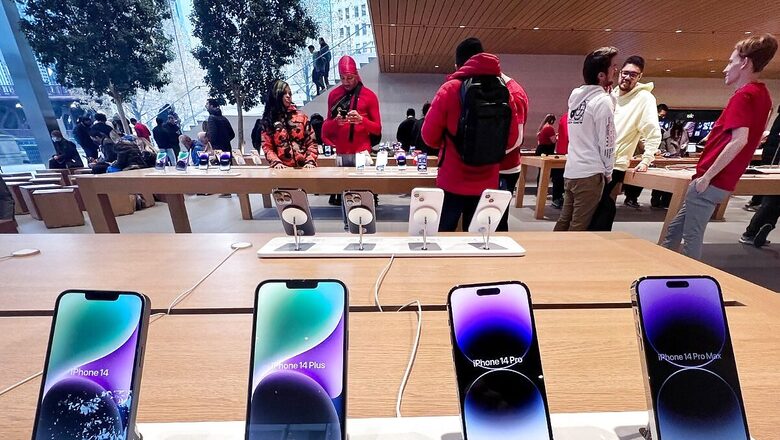
views
After the launch of the latest iPhone series, Apple has confirmed that the premium smartphones will support NavIC (Navigation with Indian Constellation), India’s indigenous navigation system. While addressing this milestone during India’s ‘Techade’, Minister of State for Electronics & IT Rajeev Chandrasekhar said all smartphones will be powered by NavIC by the end of 2025.
Apple’s adoption of NavIC follows other brands such as Xiaomi, Poco, Oppo, Vivo, and OnePlus that have already incorporated the system into some of their models.
Chandrasekhar hinted that the government may offer cashback incentives to smartphone companies that use India-designed or India-manufactured chips that support NavIC. This is in line with the production-linked incentive (PLI) scheme that the government has already announced for the IT hardware industry. The minister also stated that Indian company Accord Software & Systems has developed NavIC chipsets, allowing automakers to integrate NavIC into their in-built navigation systems.
However, Chandrasekhar clarified that the government wants smartphones and automobiles to use NavIC in addition to other GPS systems, such as the US’ GPS, Russia’s GLONASS, EU’s Galileo, China’s BeiDou, and Japan’s QZSS.
NavIC Facts
The Indian Space Research Organization (ISRO) developed NavIC, which was first approved in 2006. The system was expected to be completed by late 2011, but it didn’t become operational until 2018. Many experts have stated that even though NavIC looks similar to GPS, it has some advantages, such as better accuracy in urban areas and under dense foliage.
The inclusion of NavIC in iPhones and other smartphones is expected to make it easier for users in India to get accurate location-based services, such as navigation, mapping, and tracking. It will also help improve the reliability of these services in areas where GPS signals are weak or unavailable.
While NavIC’s addition to smartphones is seen as a move that will further boost the adoption of the system and help to make it a more widely used navigation system, the development of NavIC chipsets for automobiles is also a positive step.
It is believed that this move will allow automakers to integrate NavIC into their in-built navigation systems, providing users with even more accurate and reliable location-based services.
Overall, the inclusion of the system in smartphones like iPhone 15 Pro and iPhone 15 Pro Max models and automobiles is a significant development for India’s space program and for the country’s navigation technology. Experts also believe that it is a step towards making India more self-reliant in the field of navigation and towards providing users with better location-based services.
Here are some of the potential benefits of NavIC in smartphones and automobiles:
- Improved accuracy: NavIC is more accurate than GPS in urban areas and under dense foliage. This could be especially beneficial for navigation apps and tracking services.
- Better reliability: NavIC is less susceptible to interference from buildings and other obstacles than GPS. This could be especially beneficial for navigation in rural areas and in countries with weak GPS signals.
- Lower power consumption: NavIC chipsets are designed to consume less power than GPS chipsets. This could be beneficial for smartphones and other mobile devices with limited battery life.
- Enhanced security: NavIC is a regional navigation system that is not subject to the same level of interference as GPS. This could make it more secure for use in critical applications, such as autonomous vehicles.
Rohan Verma, CEO & Executive Director, MapmyIndia told News18: “This move by the government to ask mobile and auto OEMs to include NavIC is fantastic and we at MapmyIndia welcome this push for further enabling self-reliance and indigenisation in this area of positioning technology. Local solutions like MapmyIndia and our consumer app Mappls, which sit on top of this positioning tech further enable indigenisation and self-reliance in this area of mapping and geospatial.”
“MapmyIndia has been actively supporting and supply NavIC enabled IoT devices to vehicle fleets, and also closely worked with ISRO to build the NavIC app optimised for use by fisherman, which was spoken about by PM Narendra Modi during Mann Ki Baat,” he noted.




















Comments
0 comment